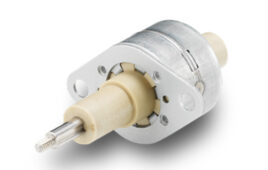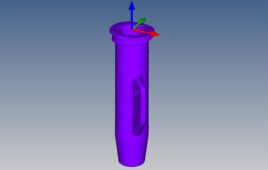Clear communication is key to success when working with any test lab partner. Maintaining good communication and following these tips will help result in a positive testing experience for all.
Kaitlin Bladl, DDL

Product testing at DDL (Image courtesy of DDL)
A minor misstep in product development and testing can have devastating consequences. While testing is unavoidable for most all medical device companies, one option is to outsource testing to a third-party lab. As in any business relationship, good communication and knowing how the other party operates can make for a more productive relationship. Following are a dozen tips on working with a third-party testing lab.
1. Know the test standard
When using an accepted standard, such as an ASTM or ISO standard, it is a worthwhile investment to purchase and understand the standard. This allows the device manufacturer and the test lab to speak the language of the standard and address any interpretational issues.
2. Organize samples and document what you send
Sending clearly labeled samples saves time and prevents confusion. Documenting samples sent in an email or by another means also helps create a trail of information for verification.
3. Provide extra samples for setups
Whenever possible, providing extra samples for test setups helps in the event there is a need to do any exploratory work and prevents the lab from having to unintentionally reduce the sample size in case any samples are inadvertently destroyed.
4. Don’t assume the test lab knows the product well
Test labs do their best not to make any assumptions on the test samples they receive and should call the device manufacturer whenever there is any uncertainty. Be sure to tell the lab anything special it needs to know.
5. Assign one point of contact
Having one point of contact at the test lab and one at the device manufacturer makes communication easier for both parties, which provides a higher degree of clarity and reduces any chance for confusion.
6. Beware of scope creep
It is not unusual for test results to differ from expectations. A common reaction is to try something different in hopes of getting a better result. It is also not unusual to second-guess a decision during the testing and want to try a variation of the original test. This often results in wasted efforts at a cost to the device manufacturer.
7. Read and understand the test lab’s quote completely
Assembling a test quote can be involved and detailed. While test labs do their best to capture everything discussed, realizing later on that something has been left out or misinterpreted can jeopardize the project.
8. Understand the order of testing
If multiple tests are to be performed but not enough samples are supplied or available for each test, work with the lab to address the order of testing. There are two general routes to consider in this scenario. The first is to subject the samples to progressively more intense tests, while the second is to begin with the most robust test and work down from there. Selecting the method that makes the most sense depends upon several factors, such as intended use, expected operating conditions and expected performance.
9. Don’t expect the test lab to diagnose unrelated problems
If a device fails a test, a good test lab will only comment on the testing that was performed and offer insight on the details of the testing. You should not expect a lab to provide advice outside its area of expertise, because the manufacturer is truly the expert on its device.
10. Communicate special requests early
Special requests are not a problem, but be sure to communicate them during the sales and quoting process to prevent delays to the project.
11. Have a clear objective for the testing
A clearly stated objective for the testing helps everyone involved to understand the purpose of the testing and can prompt questions from the test lab that can lead to a more appropriate test method.
12. Prepare samples to the standard
In an effort to save money, some manufacturers will prepare their own test samples. If not performed correctly, the testing may be compromised or have to be repeated. If a manufacturer chooses to prepare its own samples, a short discussion with the test lab might offer several best practices that make this route worthwhile.
Kaitlin Bladl is product & materials supervisor for DDL, a package, product and materials testing company for the medical device industry. She holds a bachelor’s degree in material science and engineering from the University of Minnesota.
The opinions expressed in this blog post are the author’s only and do not necessarily reflect those of Medical Design and Outsourcing or its employees.




